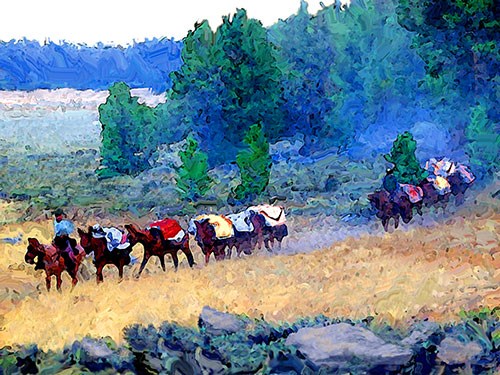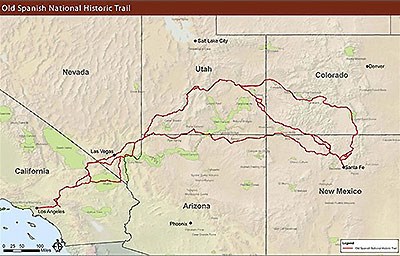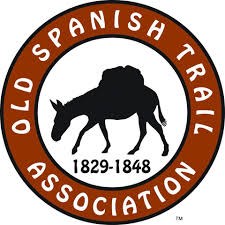
Illustration: NPS/Patrick Myers As you gaze across the broad San Luis Valley floor west of the dunes, imagine for a moment it is the 1830s. In the bright sun you see a mule train slowly plodding across sandy grasslands, carrying heavy bundles of woolen blankets. These mules were being led by ordinary people who were making a long, arduous journey through some of the roughest wilderness in North America. As these weary sojourners and animals trudged north, what might they have felt when massive sand dunes appeared ahead of them, piled up against the Sangre de Cristo Mountains? 
NPS Established by Congress in 2002 as America’s 15th national historic trail, the Old Spanish Trail route spans six western states, including many locations accessible to the public. At Great Sand Dunes National Park, State Highway 150 and County Lane 6 on the southern border of the park follow or cross some of the Old Spanish Trail routes. 
Handcrafted woolen blankets were being produced in what is now New Mexico in the 18th and 19th centuries, but there was little profit from the sale of them there. Foresighted traders knew that they could be traded for needed livestock in California, but the way there was long and treacherous. 
NPS/Patrick Myers These early travelers frequently traded with Indigenous tribes along the way, although some groups attacked and stole horses or other goods. Established primarily for trade, the trail also felt the footsteps of many native tribes, soldiers, and settlers looking to homestead farther west. 
In 1994, the Old Spanish Trail Association was established “to study, preserve, and protect The Old Spanish Trail.” This non–profit organization has worked in cooperation with the National Park Service, Bureau of Land Management, and local agencies to try to learn more about the trail, and to educate the public about this historic resource. Through the efforts of this group and many other agencies and citizens, Congress established The Old Spanish National Historic Trail in 2002 to interpret the trail’s little–known history, and to preserve the scenic and cultural resources associated with the trail. The National Park Service and Bureau of Land Management are responsible for administration of the historic trail. Visit the official National Park Service website for Old Spanish National Historic Trail for more information. The latest planning efforts for the national trail, and basic information about its history are available on this site. |
Last updated: May 1, 2025
